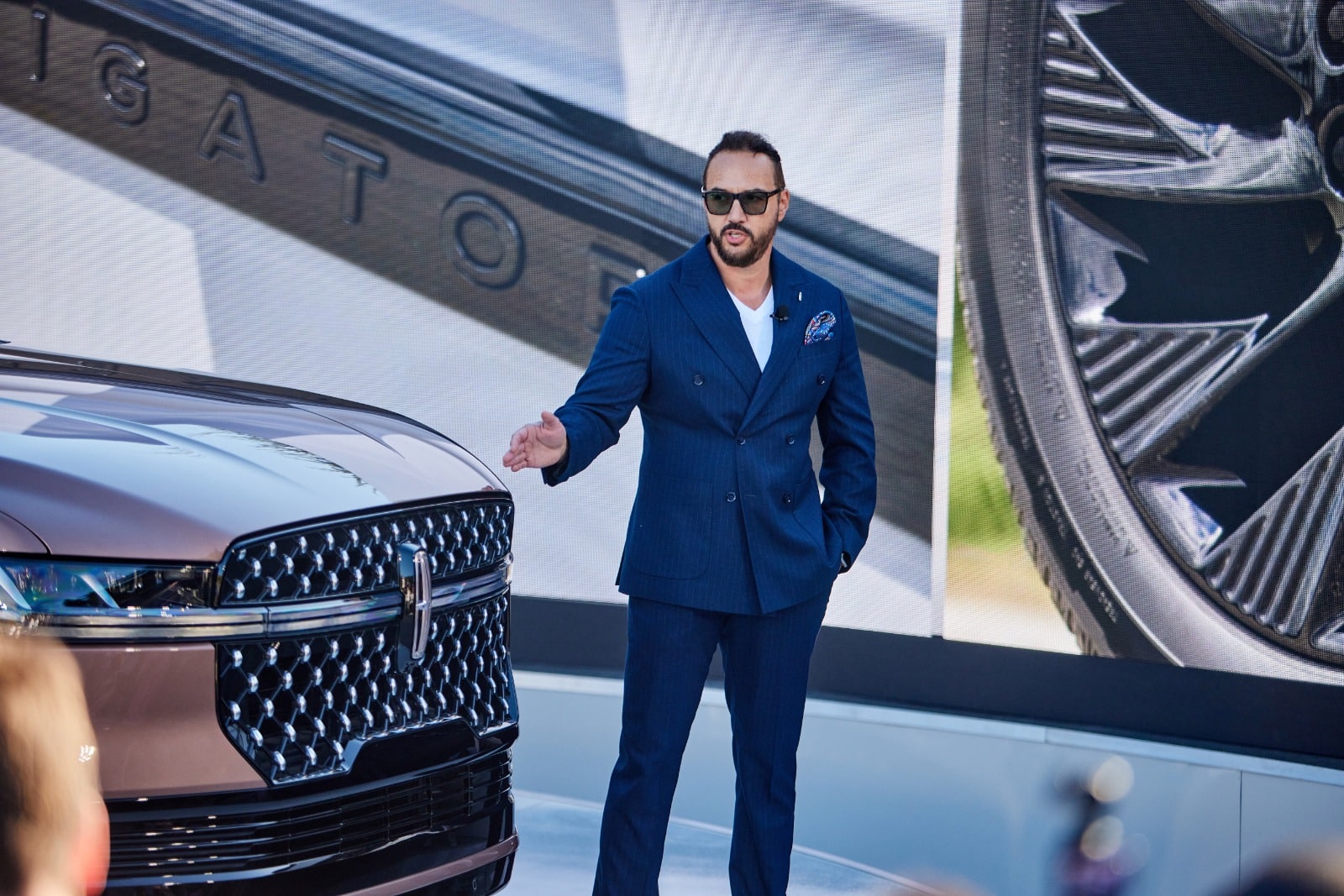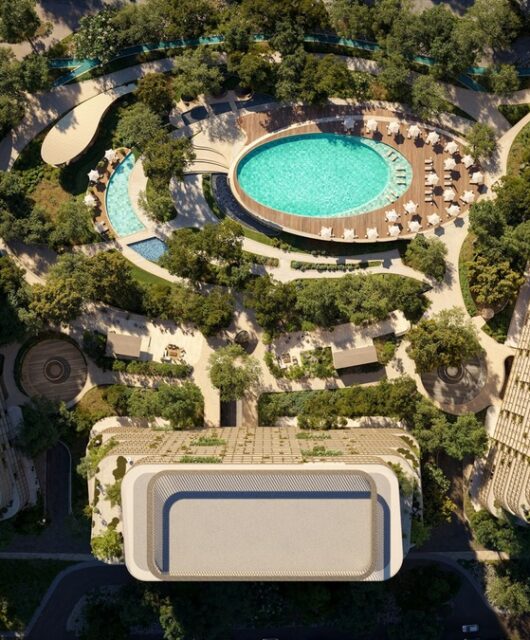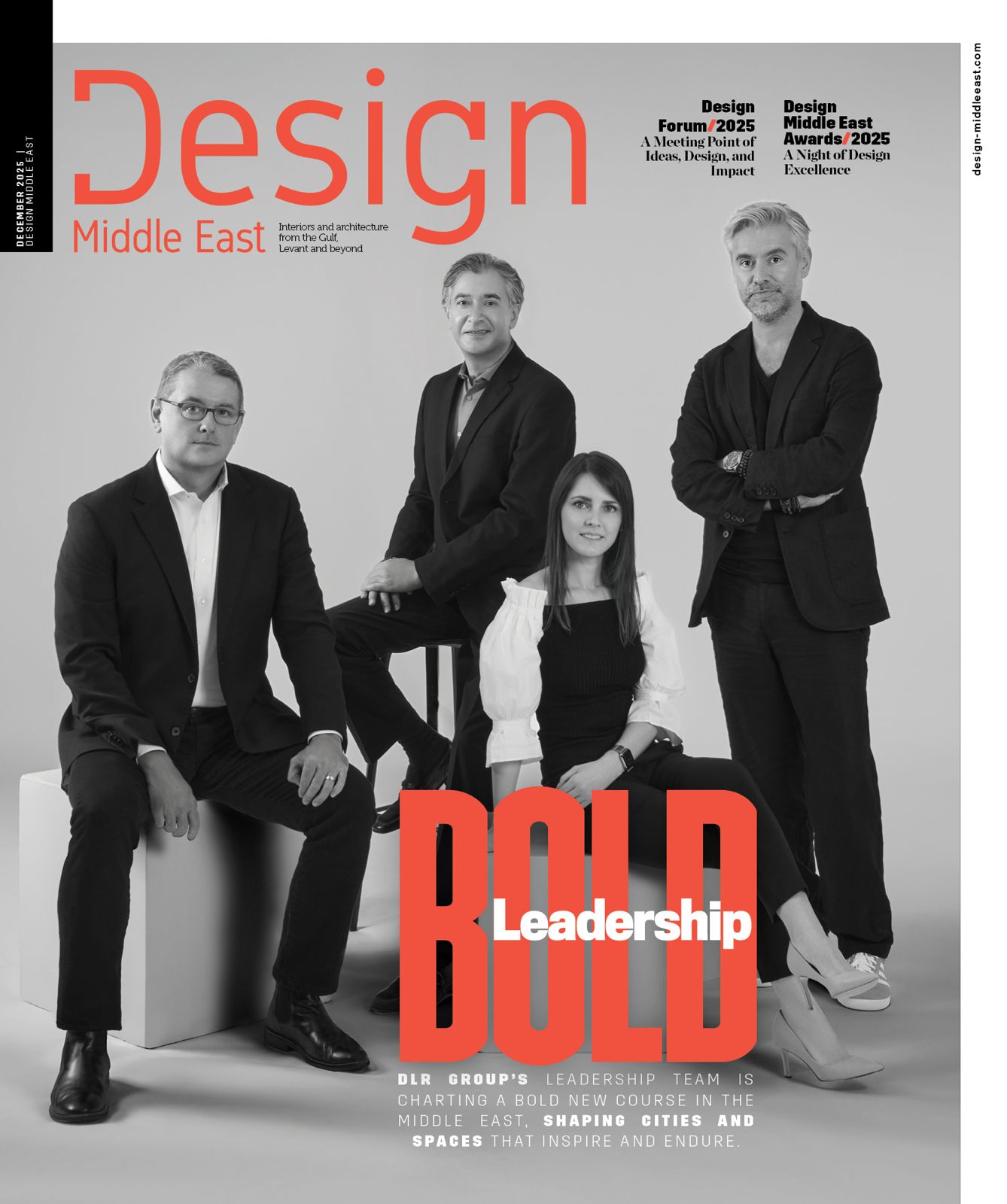
Kemal Curic, Lincoln’s Global Design Director, discusses his evolving approach to car design, influenced by global markets and technology. He highlights the challenges of maintaining brand identity across regions and emphasises sustainability in design.
What inspires you personally as a Global Design Director at Lincoln?
My inspiration stems from the challenge of creating truly holistic experiences that go beyond the surface. I’m driven by the desire to forge deep emotional connections through design, making every interaction a multi-sensory journey. For me, design is not just a process but a way to evoke and amplify emotions, much like music does. Music, with its profound emotional resonance, plays a pivotal role in inspiring my designs. It allows me to translate those feelings into other forms of design, elevating them to new levels of expression and experience.
For instance, when designing the Lincoln Nautilus, our goal was to create an experiential “home away from home” for our customers. Drawing from my personal journey—having driven 2,000 miles from Los Angeles to Vancouver and 3,000 miles from Detroit to Los Angeles with my three children in the Lincoln Nautilus—I can confidently say that this vehicle embodies the essence of comfort and purposeful luxury on the road. It’s more than just a travel companion; it’s a space where design and experience seamlessly converge to create lasting memories.
How has your approach to automotive design evolved over the years?
My approach to automotive design has evolved significantly over the years, shifting from a primary focus on aesthetics to a more holistic and integrated perspective. Working closely with the Ford design team, we now place meticulous emphasis on both the physical and digital aspects of our designs, ensuring that every detail enhances the overall elegance and functionality of Lincoln vehicles.
This evolution has led us to blend cutting-edge technology with handcrafted details and luxurious materials, aiming to create experiences that are not just visually captivating but also immersive and deeply satisfying. Our designs are crafted to engage all the senses, evoking positive emotional responses through captivating exteriors and serene, thoughtfully designed interiors.
A key aspect of this evolution has been adopting a user-centered approach, where comfort, well-being, and the overall user experience are at the forefront of every design decision. We’ve elevated the importance of personalization and luxury, offering curated and bespoke designs that cater to individual preferences, allowing each vehicle to be as unique as its driver. Understanding how our customers interact with their cars, what they need, and what they value has become central to our process. This insight allows us to cater to a wide range of preferences while ensuring that our designs embody purposeful luxury and understated elegance, making each journey not just a drive but an experience to be savored.
How does the rich tapestry of Middle Eastern art and architecture influence the design of Lincoln vehicles?
The rich tapestry of Middle Eastern art and architecture profoundly influences the design ethos of Lincoln. The region’s deep-rooted tradition of craftsmanship, meticulous attention to detail, and the emphasis on evoking emotional connections in architecture and design resonate strongly with our design philosophy.
We have drawn inspiration from key elements of Middle Eastern design, such as spacious interiors, the strategic use of natural light, and an overarching sense of tranquility. These aspects are seamlessly integrated into the Lincoln design language. For example, the architecture of Abu Dhabi’s Louvre Museum influenced the interior lighting and open-space layout of our vehicles, creating an environment that feels both open and intimate. Additionally, the serene openness found in Zaha Hadid’s architectural work further inspired our designs, ensuring that the interiors of Lincoln vehicles provide a calming and luxurious experience for our users.
My personal travels in the Middle East have also deeply shaped our design approach. Walking into spaces like the Bvlgari Hotel in Dubai, I was struck by the architect’s intent to create a sanctuary—a place where stress simply melts away. This experience of emotional connection became a cornerstone of our design process for the Nautilus, where we focus on how our customers feel. Our goal is to provide a multi-sensory experience that is as pleasing and serene when driving as it is when stationary, blending the essence of Middle Eastern tranquility with the luxury and sophistication that define all Lincoln vehicles.
What are the key challenges you face when designing for different global markets, and how do you overcome them?
The real challenge—and what often keeps me up at night—is creating luxury vehicles that are universally appealing while also resonating with regional preferences. This balancing act is at the core of our design philosophy at Ford. Our global design team is incredibly diverse, not just in terms of our backgrounds but also in our skill sets. This diversity is something I’m particularly proud of, as it allows us to access a wide range of ideas, cultural insights, and creative perspectives.
To ensure our vehicles resonate with different regions, we localize features to accommodate various cultural nuances. This process is driven by extensive market research, enabling us to understand and meet the specific needs of different markets. For example, the Lincoln Nautilus offers exclusive themes such as the Presidential, Redwood and Chalet themes – all specifically selected to appeal to our customers in the Middle East as the ultimate expressions of luxury. These tailored options reflect our commitment to blending global appeal with regional relevance, ensuring that our vehicles not only meet but exceed the expectations of our diverse customer base.
What role does sustainability play in your design philosophy at Lincoln?
At Lincoln, sustainability is a priority. We are dedicated to constantly exploring new materials and processes that minimize environmental impact, reflecting our commitment to eco-friendly practices. Our focus extends to enhancing fuel efficiency and offering a diverse range of powertrain options to meet the varied needs of our global clientele. In conjunction with these priorities, we ensure that our design principles remain uncompromised, maintaining the highest standards of innovation and aesthetics.
How do you incorporate sustainable materials into car interiors without compromising luxury and comfort?
Our researchers are continuously exploring eco-friendly, durable, and cost-effective materials for vehicle interiors, with a strong commitment to sustainability across all components—from seat cushions to trunk liners. We evaluate a wide range of materials, including plastics, rubber, recycled items like old jeans and plastic bottles, and bio-based sources such as soybeans.
While our goal is to be more eco-friendly, we never compromise on functionality or durability. For Lincoln, in particular, we uphold the highest standards of luxury and comfort that our customers have come to expect. This commitment is reflected in our use of recycled and ethically sourced materials throughout our vehicle interiors. For instance, the leather used in Lincoln interiors is ethically sourced, which not only meets our stringent quality standards but also often has a reduced carbon footprint compared to synthetic alternatives.
By integrating these sustainable materials, we aim to create interiors that are not only luxurious and comfortable but also contribute to a more sustainable future. This approach ensures that our vehicles embody both the elegance and the environmental responsibility that our customers value.
What are the unique preferences of Middle Eastern consumers that influence your design decisions?
When designing for the discerning Middle Eastern consumer, we go beyond the conventional notions of luxury and comfort to create spaces that are truly inviting and hospitable. This approach is deeply influenced by the region’s renowned tradition of hospitality, where guests are treated like family. At Lincoln, we embody this philosophy by treating our customers as family, ensuring that every design decision reflects a deep understanding of their needs and values.
In the Middle East, luxury extends beyond aesthetics; it’s about crafting a genuinely comfortable and welcoming experience. Lincoln vehicles are more than just cars—they are extensions of the home, where comfort, hospitality, and refined taste converge to offer an unparalleled driving experience. The Nautilus, for example, features plush, high-quality leather seats, spacious seating arrangements, and a meticulously crafted interior that exudes both opulence and tranquility.
Advanced technology also plays a pivotal role in defining luxury, particularly as it relates to connection and safety. At Lincoln, we seamlessly integrate this technology not just for the driver but for all passengers, transforming every journey into a shared experience of entertainment and connectivity. This reflects our commitment to creating a holistic environment where every aspect of the vehicle contributes to a sense of well-being.
When it comes to aesthetics, we recognize the strong regional preference for bold and stylish designs. Sleek lines, distinctive grilles, and modern, assertive looks resonate well with Middle Eastern consumers. Customization options, such as unique paint colors and interior finishes, are highly valued, allowing for a personalized expression of luxury. The all-new Nautilus Presidential trim, for example, addresses these unique preferences by combining high-end luxury with state-of-the-art technological innovations.
True luxury, however, is often understated. It doesn’t shout; it whispers of elegance and sophistication. Lincoln vehicles embody this principle with their refined design language, where every line and curve speak of understated elegance and timeless sophistication—qualities that our Middle Eastern customers deeply appreciate.
How do you anticipate and adapt to changing consumer trends in the luxury automotive sector?
At Lincoln, we believe in setting industry standards rather than merely following them. Our design and product trends are crafted with the intention of leading the market, and this philosophy extends well beyond product execution. We are deeply invested in developing new technologies that are tailored to enhance user experiences, always keeping innovation at the forefront. Our commitment to a human-centric approach is evident in our state-of-the-art, intuitive displays that not only enhance but also seamlessly connect user experiences, aligning with our core philosophy of effortless and purposeful luxury.
We pride ourselves on being pioneers in the shift to understated elegance, reflecting the confidence we have in our brand and design. This approach resonates deeply with our customers, as it embodies the sophistication and subtlety that define true luxury. Designing for emotions and creating a multi-sensory experience is central to our strategy. We consistently listen to our customers, placing them at the heart of future design trends, ensuring that our products not only meet but exceed their expectations.
The Lincoln Nautilus, in particular, has attracted a very loyal following among both new and returning customers. This loyalty is a testament to the high-end experiences we provide—experiences that our customers have come to trust and love. As we look to the future, we anticipate a significant rise in intelligent vehicles, and we are dedicated to staying at the cutting edge of this evolution.[i]
How do you blend cutting-edge design technologies with luxurious details to meet the expectations of Middle Eastern consumers?
We take great pride in effortlessly blending cutting-edge design technologies with luxurious details, striking a delicate balance between our global brand identity and regional preferences. This approach ensures that while we maintain a consistent brand ethos, we are also able to cater to the diverse cultural aesthetics and functional needs of our customers around the world.
The Lincoln Star concept is a prime example of this strategy in action, introducing a new design language both inside and out. This design language is built on core tenets such as beauty, human-centered design, a gliding motion, and a sanctuary-like environment. These principles are fully integrated into our design process, guiding the future of our approach to resonate with the sophisticated tastes of Middle Eastern customers.
This commitment to harmonizing functionality with aesthetic appeal is clearly demonstrated in the Nautilus, where every detail is carefully considered. Features like the large display panels are not only intuitive and easy to use but also visually striking, ensuring that functionality and beauty coexist seamlessly[1]. This fusion of technology and luxury speaks to our dedication to creating vehicles that not only meet but exceed the expectations of our discerning customers, making every journey a truly refined experience.
What are some of the latest technological advancements in automotive design that you’re excited about?
Recent advancements in automotive design are truly revolutionizing the driving experience, especially when it comes to connectivity and user experience. One of our most exciting developments is the integration of connected experiences that elevate vehicle interiors to a whole new level.
For example, the Lincoln Rejuvenate transforms vehicle interiors into a relaxing oasis, offering features such as adjustable lighting, customizable seat positions, screen displays, and massage seat settings. Each of these elements (that will be available in the Middle East markets in 2025) is meticulously designed to create a calming and enjoyable atmosphere, making every drive a serene escape. Additionally, innovations like digital scenting in the Nautilus take personalization to another level. With a specially curated range of digital scents for the cabin, drivers and passengers can create a personalized ambiance that suits their mood and preferences. This innovation offers a truly immersive and bespoke driving experience, where the environment inside the vehicle is just as important as the journey itself.
These advancements are not just about adding luxury; they are about enhancing comfort, enjoyment, and personalization, making every drive more comfortable, enjoyable, and tailored to individual preferences.
What do you see as the future trends in automotive design, particularly in the context of the Middle Eastern market?
The future of automotive design, particularly in the context of the Middle Eastern market, will continue to be a blend of innovation, tradition, and cultural influence. With a proud 100+ year legacy, Lincoln is at the forefront of this evolution, driving excellence and innovation.
We see emerging trends that integrate local cultural and artistic influences, incorporating regional designs and materials to resonate deeply with Middle Eastern customers. Blending traditional craftsmanship with modern design elements, Lincoln upholds a legacy where both heritage and innovation combine to feature sleek aerodynamic shapes, LED lighting, and hidden door handles.
We don’t just observe changes in the automotive landscape; we lead them. Drawing inspiration from the world around us, we are committed to creating unparalleled customer experiences that align with the dynamic and rich culture of the Middle East.







